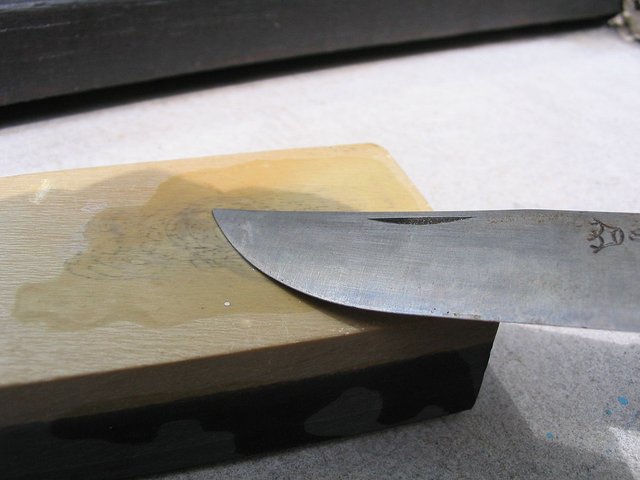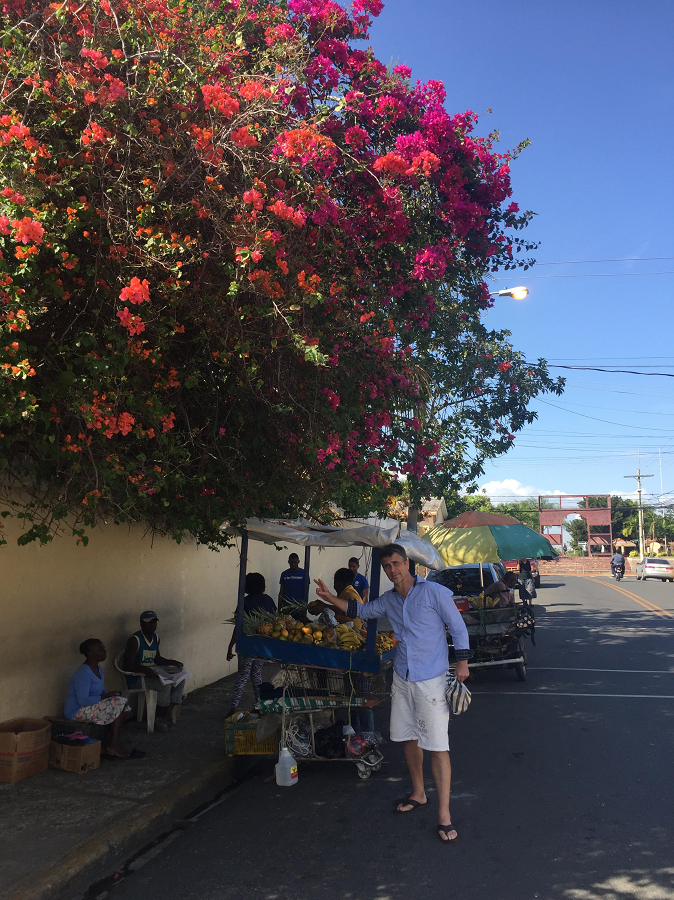Recently I went to the Belgian Ardennes. It is situated in the southern part of Belgium and has some wonderful geological features if you know where to look. One of these features is the coticule that can only be found in a very specific and small area and is unique to the country. It is very suitable for sharpening knives and other material and has been used worldwide for sharpening at surgical precision. I am no geologist, but here is what I can tell you about it:
Coticule specimen taken from an open mine in the Belgian Ardennes. You can click the image to see the full size
Formation of the coticule
The coticule started to form in the early Ordovician (approximately 450 million years ago), when Belgium was situated on the southern hemisphere, "shortly" after the Cambrian explosion. The region was part of a volcanic arc where subduction took place and a lot of volcanic activity was present. This volcanic activity brought a lot of iron en manganese in the environment.
Reconstruction of the landmasses in the Ordovician. You can click the image to see the full size
The yellowish band of coticule itself originates form calcareous mud where the chalk got replaced by manganese. The Iron later formed Hematite which can be seen as the red color in the base material.
Eventually these deposits got covered and an entire geological history happened that is way to long to talk about in a single post. Many period of orogeny, rift forming and sedimentation later brings us to the present. The iron rich soil eventually formed the purple slate(? Correct me if I'm wrong) and the manganese minerals transformed into fine grained garnets which is what gives the coticule its hardness.
Exploitation
The coticule stone has been used as long as people lived in the area. This was mainly for local use on farms and in households. The stone only got really popular after 1865. A certain Mrs. Denise Burton-Walrant decided to start a business selling the processed stone. She had a very dynamic personality and expended her brand across the borders, into France, Germany, Italy and England. You should not forget that for such a small business transportation on this scale was remarkable as the railways where just starting to develop.

A processed coticule used as whetstone.
After almost 40 years her son took over and expanded even further and as a byproduct provided the entire town with electricity for public lighting and houses.
again 50 years later, two brothers took over the company. They managed to sell the coticule to almost all places of the world, from Europe to the USA, Congo, Mexico, Egypt and many more. But this was also the time the competition from electric razors (reducing demand of whetstones) and artificially produced whetstones arose.
eventually in 1982, 117 years after the start of the large scaled exploitation, the company could no longer compete in an ever changing market and live style and they halted production.
Currently the site has reopened by a few enthusiasts who keep a small production running for interested people.
To summarize
So that is the story behind this rock. I think it is amazing that such a simple object can tell so many different stories. From geological history over 400 million years ago, to a social and economic tale that changed an entire region. Please let me know what you think about this post so I know what to write about next.
Regards!
Sources
All images used where my own, or labeled for reuse.
https://www.ardennes-coticule.be/en
Stassens P. (2017) Geologie van België
We used always this special stone as you have shown on the third photo in our kittchen (Hotel). But i never knew that this coticule are originally coming from belgium. We bought it at the special foodstore, haha. My father taught me how to use it to sharpen a knife

Really impressing story. thanks for these informations.
Greetings from the carribean. mikeCee
Downvoting a post can decrease pending rewards and make it less visible. Common reasons:
Submit
Well now you know it's story! 😄 The third image is indeed how a finished coticule whetstone looks like. Wonderful to hear that it even reaches the Caribbean!
Downvoting a post can decrease pending rewards and make it less visible. Common reasons:
Submit
An interesting post about an unusual subject. Good work.
Downvoting a post can decrease pending rewards and make it less visible. Common reasons:
Submit
Thanks!
Downvoting a post can decrease pending rewards and make it less visible. Common reasons:
Submit
I wanted to say "nice to see you posting" and then I realized that I was not following you. I fixed my error and I didn't know about the little islands not being part of the Gondwana but floating in Panthalassa. But hey - smarter every day :D
Thanks for educating me!
Downvoting a post can decrease pending rewards and make it less visible. Common reasons:
Submit
Haha thanks! But you're also right, my last post on my personal account was also 3 weeks ago 😄. I would love to know what it would look like if we still lived on a mega continent, must make for some nice road trips.
Downvoting a post can decrease pending rewards and make it less visible. Common reasons:
Submit
Being A SteemStem Member
Downvoting a post can decrease pending rewards and make it less visible. Common reasons:
Submit